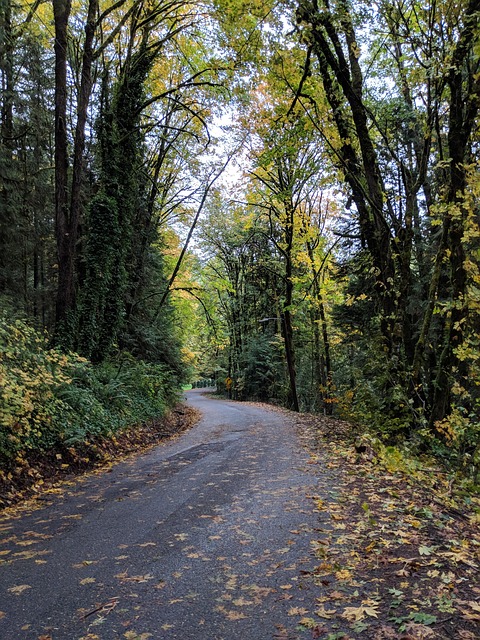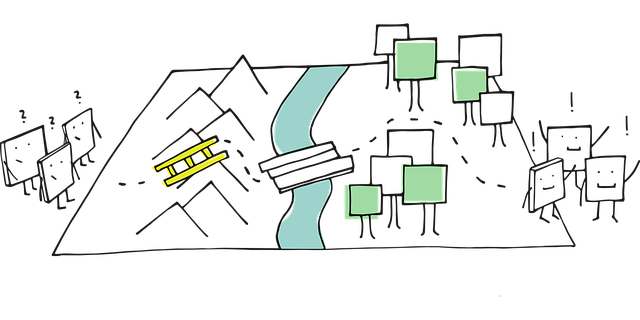Eugene, Oregon, is a leader in accessible transportation, offering an extensive network that caters to all residents' needs. The city's modern bus fleet includes wheelchair-accessible buses, and its paratransit services ensure door-to-door mobility for those with disabilities or limitations. Senior transport is also a priority, with reduced fares and dedicated seating. Eugene's commitment to inclusive transport fosters independence, enabling residents with diverse needs to navigate the city seamlessly.
“Explore the accessibility of public transit in Eugene, Oregon, where efficient systems coexist with challenges for specific user groups. This article delves into the current state of transportation, examining the experience of individuals with disabilities, seniors, and wheelchair users. We uncover barriers and highlight accessible initiatives, including paratransit services. Moreover, we offer recommendations to enhance wheelchair accessibility and promote an inclusive transport future for Eugene. Discover how these efforts contribute to better mobility options for all.”
- Current State of Public Transit Accessibility in Eugene Oregon
- – Overview of existing public transportation systems
- – Analysis of current accessibility for different user groups (disabled, seniors, wheelchair users)
- Challenges Facing Inclusive Transportation in Eugene Oregon
Current State of Public Transit Accessibility in Eugene Oregon

The current state of public transit accessibility in Eugene, Oregon, reflects a commitment to inclusivity and equal opportunities for all residents, including those with disabilities or mobility challenges. The city boasts an extensive network of wheelchair accessible buses and facilities, ensuring that disabled transport is not just available but seamlessly integrated into the urban fabric. This accessibility extends to senior citizens as well, with paratransit services tailored to their specific needs, promoting independent living within the community.
Eugene’s public transportation system is renowned for its inclusive approach, offering a range of options from regular bus routes to specialized paratransit services that cater to individuals who cannot use traditional bus service due to disabilities or other constraints. This comprehensive strategy ensures that everyone, regardless of their abilities, can navigate the city with ease and participate fully in community life, underscoring Eugene’s reputation as a leader in accessible transportation in Oregon.
– Overview of existing public transportation systems

Eugene, Oregon boasts an extensive public transportation network designed to be accessible to all residents and visitors, including those with disabilities. The system encompasses a mix of fixed-route buses, paratransit services, and dedicated accessibility features that cater to the diverse mobility needs of the community.
The local bus fleet is comprised of modern vehicles equipped with wheelchair ramps and low floors for easy access. Paratransit services, complementary to the fixed-route system, offer door-to-door transportation for individuals who cannot use traditional buses due to disabilities or other constraints. These services ensure inclusivity, facilitating independent travel for seniors, people with disabilities, and others who require specialized transport options. Eugene’s commitment to accessible transportation is evident in its ongoing efforts to expand and improve these systems, making the city a model for inclusive mobility in Oregon.
– Analysis of current accessibility for different user groups (disabled, seniors, wheelchair users)

In Eugene, Oregon, efforts have been made to ensure accessible transportation for all residents, including those with disabilities, seniors, and wheelchair users. The city’s public transit system boasts a fleet of vehicles equipped with features such as low-floor entrances, ramps, and dedicated spaces for wheelchairs and mobility devices. These accommodations make it easier for people with physical limitations to navigate the city independently. Paratransit services complement the traditional bus network, offering door-to-door pick-up and drop-off for those who cannot use fixed-route buses due to their disabilities or other challenges.
When it comes to senior transport in Eugene Oregon, the system prioritizes ease of access and comfort. Seniors can take advantage of reduced fares and dedicated seating areas, ensuring a more peaceful journey. The inclusive transport approach extends to addressing the needs of the disabled community through specialized services that cater to their unique mobility requirements. These initiatives underscore Eugene’s commitment to fostering an accessible transportation environment where all citizens can enjoy the benefits of efficient public transit, promoting independence and participation in the vibrant city landscape.
Challenges Facing Inclusive Transportation in Eugene Oregon

Eugene, Oregon, faces unique challenges when it comes to providing accessible transportation for all its residents. While the city has made strides in improving public transit options, there are still significant barriers to inclusive transport. The primary concern lies in ensuring that individuals with disabilities, seniors, and those using wheelchairs have equal access to reliable and efficient transportation services. Many current systems are not fully wheelchair accessible, making it difficult for people with mobility issues to navigate the city independently.
One of the key aspects to address is the lack of dedicated paratransit services tailored to the needs of the disabled community. While general public transit options exist, they may not accommodate all disabilities, leading to limited mobility and social isolation for some residents. Enhancing these services with specialized vehicles and trained personnel can significantly improve accessibility and independence for those who rely on them. Additionally, fostering collaboration between various transport providers and disability organizations is crucial to developing comprehensive solutions that cater to the diverse needs of Eugene’s inclusive transport landscape.
